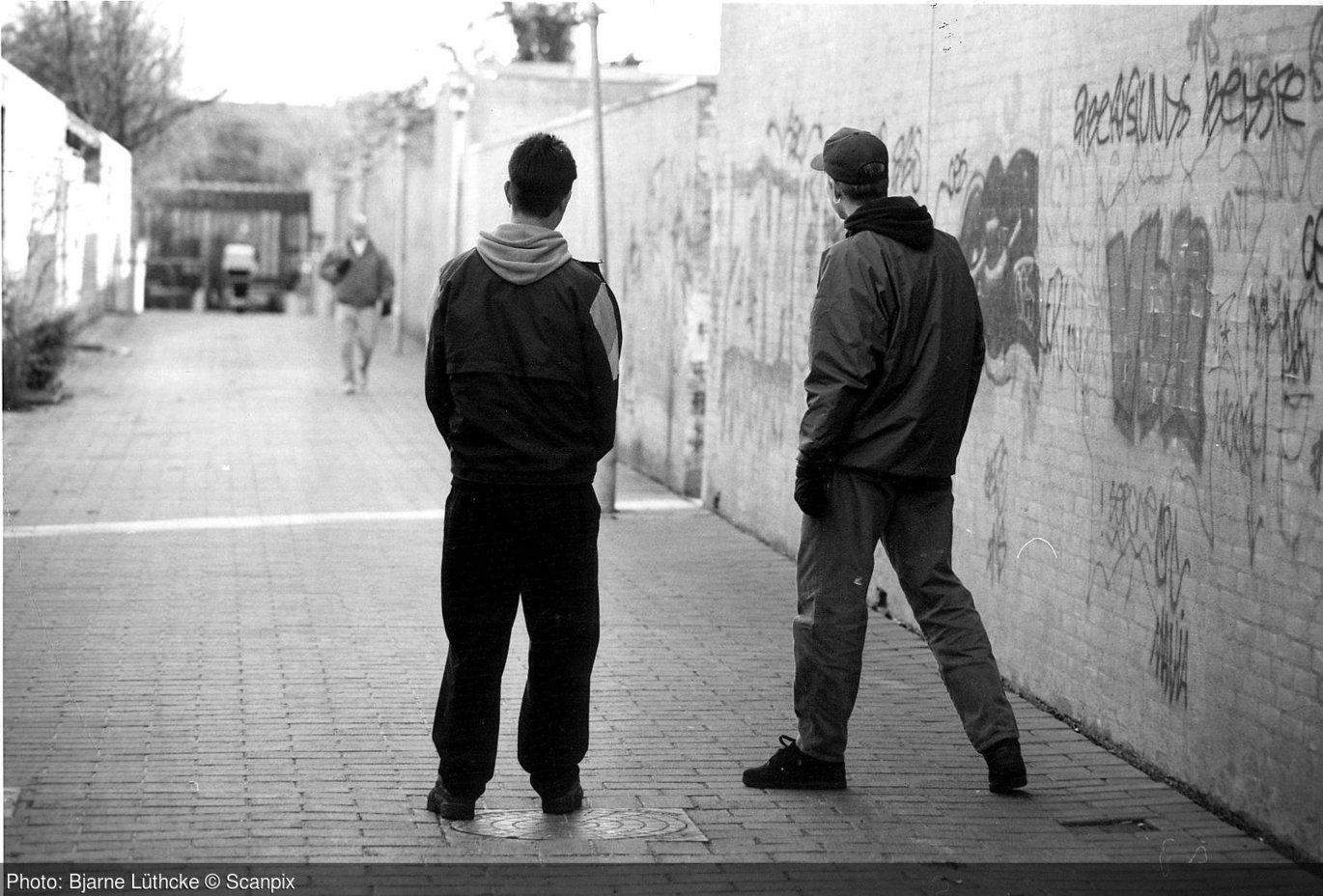Lowering the minimum age of criminal responsibility has no deterrent effects
The reform which lowered the minimum age of criminal responsibility from 15 to 14 years of age during 2010-2012 did not reduce the share of 14-year olds charged with violation of the penal code. These are the findings of a new study from TrygFonden's Centre for Child Research conducted by researchers from Aarhus BSS and VIVE.

Contrary to the politicians’ intentions, lowering the minimum age of criminal responsibility had no general deterrent effect. Moreover, the recidivism rate within 18 months increased by 10 per cent among 14-year-old penal code offenders whose cases were processed in the legal system.
These are the findings of a new study conducted by Professors Anna Piil Damm, Helena Skyt Nielsen and Marianne Simonsen at the Department of Economics and Business Economics at Aarhus BSS and researcher Britt Østergaard Larsen from VIVE (The Danish Centre of Applied Social Science).
In 2010, a majority in the Danish Parliament voted in favour of lowering the minimum age of criminal responsibility to 14 years of age with the aim to reduce juvenile crime. Partly through a general deterrent effect; the legislative amendment aimed at getting children and young people to think twice and desist from committing crimes. Partly through an individual deterrent effect; having to face the criminal justice system at the young age of 14 was meant to prevent young offenders from recidivism.
Analysis of the reform
The researchers have now analysed the effects of the reform. The reform was in effect from July 2010 to February 2012, at which time a new majority in the Danish Parliament re-established the minimum age of criminal responsibility at age 15.
The study is based on register data for eight cohorts born in 1993-1999 (a total of 512,369 children). The analyses use police registrations of suspected offences and charges based on violations of the Danish criminal code committed by children below and above the minimum age of criminal responsibility.
“Taking into account the general downward trend in juvenile crime in Denmark, we see no reduction in the share of 14-year-olds who commit penal code offenses, even though they were subject to legal punishment during the reform period,” says Anna Piil Damm, Professor at Aarhus BSS.
Around the time of reform there were discussions about whether crime would trickle down to children below the minimum age of criminal responsibility, and the study therefore also include analyses of crime rates for the 13-year-olds, who could not be prosecuted, prior to or during the reform period. The results show that the share of 13-year-old penal code offenders did not increase during the reform period when 14-year-olds were subject to legal punishment.
Reform impacted schooling
Finally, the researchers study how the 14-year-olds who were charged with a penal code offense during the reform period fared later in life compared to 14-year-olds charged just before the reform. The aim was to shed light on whether a more severe punishment affected recidivism and subsequent schooling.
“Our study clearly shows that lowering the minimum age of criminal responsibility did not have the intended deterrent effect on the 14-year-old offenders who had their case handled by the criminal justice system instead of the social authorities during the reform period,” says Anna Piil Damm.
No deterrent effect
Overall, the study shows that the changes in the reform period in 2010-2012 neither had a general deterrent effect on 14-year-olds, nor did they have an individual deterrent effect on their recidivism. The study also showed that the 14-year-olds who had their case handled in the criminal justice system had worse schooling outcomes than 14-year-olds who committed criminal offences prior to the reform.
“There can be many possible explanations for these results, but if you want to reduce the number of crimes committed by children and young people and ensure that they get the best schooling, our findings point to a system with less interference by the legal authorities is preferable,” says researcher Britt Østergaard Larsen, VIVE.
Background information on 14-year-old offenders during the reform period
Study uses unique data The study uses administrative register data from the Danish police on children below the minimum age of criminal responsibility as well as administrative register data from Statistics Denmark on charges and convictions for children above the minimum age of criminal responsibility. This makes it possible to compare criminal offences committed by 14-year-olds prior to and during the reform period. How were the analyses conducted? Analysis 1: Did the reform which lowered the minimum age of criminal responsibility deter 14-year-olds in general from committing crimes? In this analysis, the researchers studies whether there is a difference in the share of 14-year-olds charged with a penal code offense in a given month prior to, during and after the reform period. This takes into account the overall downward trend in crimes committed by 14-year-olds during the observation period, seasonal variation as well as the young person’s demographic characteristics, socioeconomic background, any family-related social problems and the police district of residence. The observation period runs from 20 months prior to the reform until 20 months after the reform. The population includes everyone who was 14 years of age at some point during the observation period. Analysis 2: Did the encounter with the criminal justice system deter 14-year-olds charged with a penal code offense from committing new crimes? This analysis follows the 14-year-olds who were charged with a penal code offense and whose cases were processed by the criminal justice system because of the reform. For comparison, the analysis also follows the 14-year-olds who were registered with a penal code offense within 20 months prior to the reform and who had their case handled by the social authorities. First, the analysis examines whether there is a difference in the recidivism rates in the two groups within 18 months of being charged with the first penal code offense. Secondly, the analysis also examines whether there is a difference in how their subsequent schooling outcomes. Among other things, the analyses take into account the child’s demographic characteristics, socioeconomic background, family-related social problems and the police district of residence. Conclusions
|
Further information:
Professor Anna Piil Damm, Department of Economics and Business Economics, Aarhus BSS:
M: +45 29 64 97 20
Researcher, PhD, Master of Science in Sociology Britt Østergaard Larsen, VIVE:
M: +45 61 66 03 86
E: brla@vive.dk
